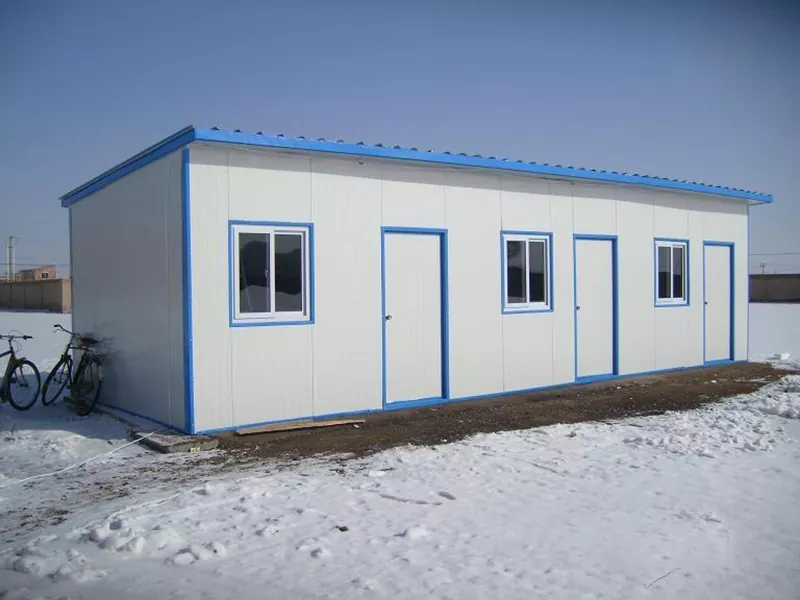QR Code


Prefabricated homes are made of a variety of materials, including:
The use of high-quality materials ensures that prefabricated homes are durable, energy-efficient, and safe. Steel and wood are two of the most commonly used materials in the construction of prefabricated homes. Steel is strong, long-lasting, and resistant to fire and pests. Wood is renewable, lightweight, and a good insulator.
Yes, prefabricated homes are generally less expensive than traditional homes. Since they are assembled in a factory, prefabricated homes require fewer workers and less time to complete. This reduces the cost of labor and materials, making prefabricated homes an affordable housing option.
Yes, one of the benefits of prefabricated homes is that they can be customized to meet the needs of the homeowner. Homeowners can choose from a variety of floor plans, styles, and finishes to create a home that is uniquely theirs.
Prefabricated homes are an eco-friendly housing option. Since they are built in a factory, there is less material waste, and the production process generates fewer emissions. Additionally, many prefabricated homes are designed to be energy-efficient, which reduces their carbon footprint over time.
In conclusion, prefabricated homes are a cost-effective, customizable, and environmentally-friendly housing option. They are made from a variety of materials, including steel, wood, cement, composite materials, and insulation. If you are considering building a home, prefabricated homes are worth considering as an affordable and sustainable option.
Qingdao Eihe Steel Structure Group Co., Ltd. is a leading manufacturer of prefabricated homes. Our homes are built using high-quality materials and are fully customizable. To learn more about our products and services, visit www.qdehss.com. For inquiries, please contact us at qdehss@gmail.com.
1. Chang-Yu Li, et al. (2020). Reinforcement performance of prefabricated shear walls with ultra-high-performance concrete panels. Construction and Building Materials, 232.
2. J. C. Muñoz, et al. (2019). Energy renovation strategies for prefabricated multi-family buildings in two climatic regions of Spain. Energy and Buildings, 182.
3. Xiaolin Zhong, et al. (2018). Prefabricated modular building using BIM and augmented reality–A case study. Automation in Construction, 94.
4. Nik Zainab, et al. (2017). Experimental comparison of formwork systems for the production of prefabricated concrete columns. Journal of Cleaner Production, 156.
5. Francis G. Kinyua, et al. (2016). Life cycle cost analysis of prefabricated schools: A case of public primary schools in Nairobi, Kenya. Journal of Cleaner Production, 131.
6. Yuexiang Li, et al. (2015). Prefabricated houses in industrialized construction: A review. Energy and Buildings, 96.
7. K. Ramachandran, et al. (2015). Lightweight prefabricated substrate-embedded biofacade elements for building applications. Building and Environment, 93.
8. Hua Fu, et al. (2014). The life cycle assessment of a typical prefabricated concrete building. Building and Environment, 72.
9. Andrew J. Sanquist, et al. (2013). A review of prefabricated modular technologies for disaster response housing. International Journal of Disaster Risk Reduction, 5.
10. Abdurrahman Kızılkanat, et al. (2012). Using ultra high performance concrete panels in prefabricated buildings. Construction and Building Materials, 28.

Copyright © 2024 Qingdao Eihe Steel Structure Group Co., Ltd. All Rights Reserved.
Links | Sitemap | RSS | XML | Privacy Policy |
TradeManager
Skype
VKontakte
